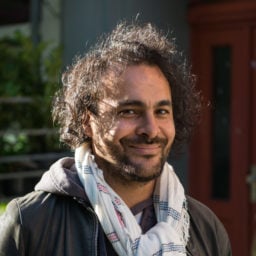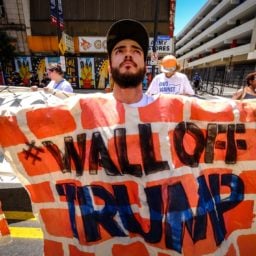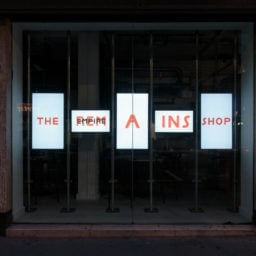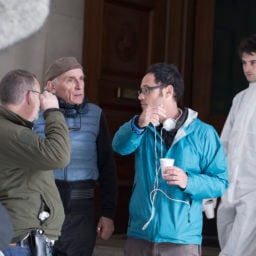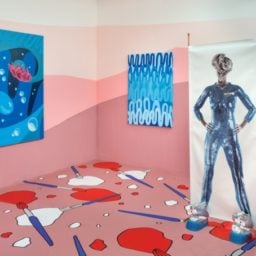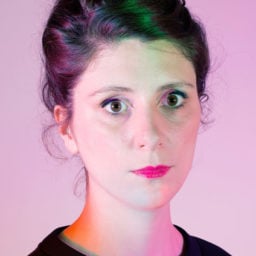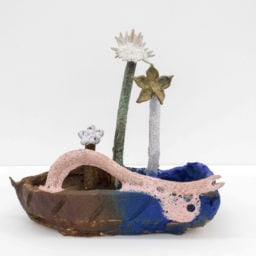

Who’s created the art we want to look at, experience, and read about? The performances we’ve wanted to be a part of (or REALLY wanted to avoid)? Which are the voices in the art world we’ve felt compelled to listen to this year, even if we don’t agree with them? Who’s surprised us, shocked us, woken us out of our stupor?
We’re not just looking at the young guns (the oldest artist on this list will be 60 next year); more those who have shifted up a gear and are grabbing our attention.
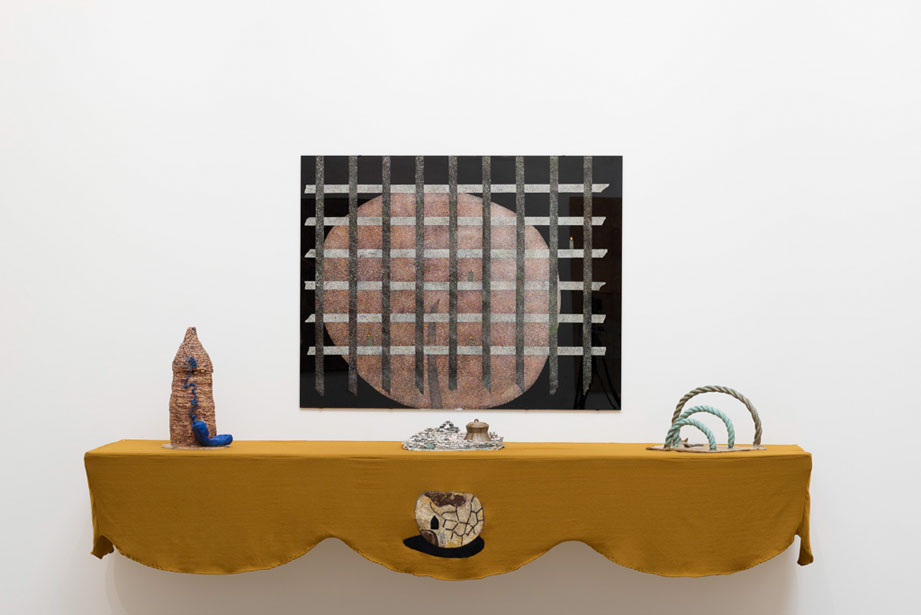
Aaron Angell, Bottle Kiln – Receiver; Peach – Portcullis; Molybdenum Bell Courtyards and Dalmatian Spoon & Three Torcs, all 2015 ©Aaron Angell. Installation view: British Art Show 8, Leeds Art Gallery, 2015-17. Photo ©Jonte Wilde Photography 2015
1. Aaron Angell (born 1987 in Kent. Lives and works in London)
With two separate displays at Glasgow International, multiple works in the (still touring) British Art Show 8 in 2016, and a residency at Tate St Ives and solo outing at GOMA coming up in 2017, London’s favourite ceramic-centric sculptor could make this list for his exhibitions alone. But 2016 was also the year that Troy Town Art pottery, Angell’s “radical and psychedelic” ceramics workshop, got a bump in funding and a new space, marking his importance, too, as an influencer.
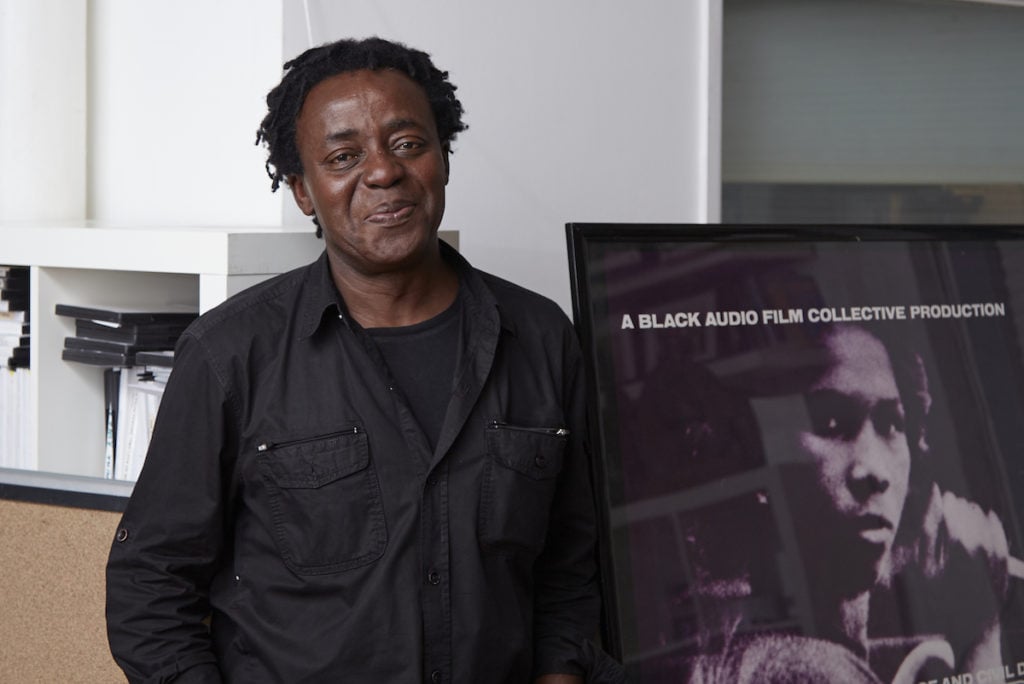
John Akomfrah. Photo: Jack Hems © Smoking Dogs Films, Courtesy of Lisson Gallery.
2. John Akomfrah (born 1957, Accra, Ghana. Lives and works in London)
Thirty years since their first film Handsworth Songs (1986) Akomfrah and regular collaborators David Lawson and Lina Gopaul, have enjoyed long-overdue time in the spotlight in 2016: a UK-wide institutional tour for the breathtaking three-screener Vertigo Sea, and buzzy outings of new works at Lisson Gallery in London and New York. Nominated for the Artes Mundi prize, this time next year Akomfrah and co will take over the Barbican’s Curve gallery.
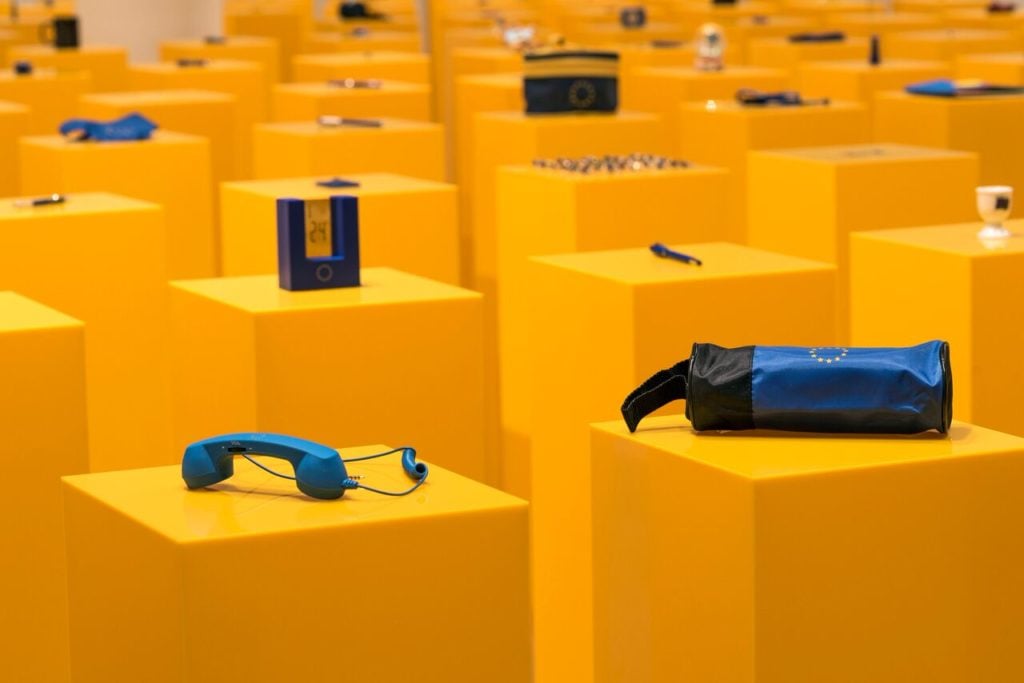
Meric Algün Ringborg. Promotion Europe. Courtesy of the artist.
3. Meriç Algün Ringborg (born 1983 in Istanbul. Lives and works in Stockholm)
Algün Ringborg’s ongoing inquiries into the symbols of Europe and what it means to be—or not to be—European felt particularly poignant this year. Promotion Europe, shown as part of her exhibition “Transboundary” at ARoS in Denmark, offers 170 objects branded with the EU stars, from nail clippers to knitted hats: souvenirs not of a place, but an idea of a place. 2017 sees an outing at Istanbul Modern, alongside, as ever, dozens of group shows keen to catch the essence of the moment.
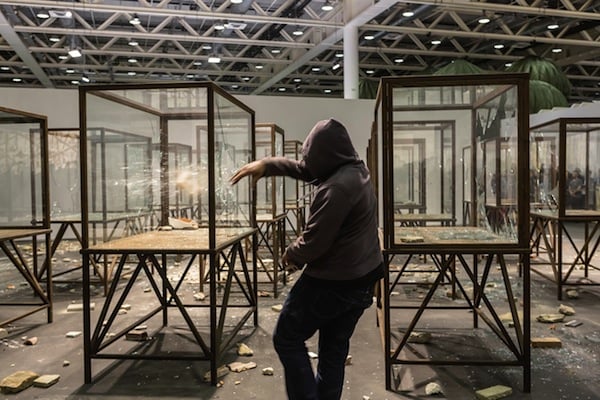
Kader Attia, Arab Spring, 2014, Unlimited in Basel 2015. Photo: courtesy Art Basel
4. Kader Attia (born 1970 in France. Lives and works in Berlin and Algiers)
Attia’s explorations of the impact of Western culture and colonialism this year nabbed him the Marcel Duchamp Award and a show (alongside the final four nominees) at the Centre Pompidou in Paris. Next year sees solo outings at MCA Sydney, and The Block Museum in Illinois, and gallery shows in NY and San Gimignano. It was his “bar and agora” La Colonie: a space dedicated to ideas, discussion and the breaking of bread that Attia opened with his partner Zico Selloum during FIAC, that secured him a place in our hearts in 2016.
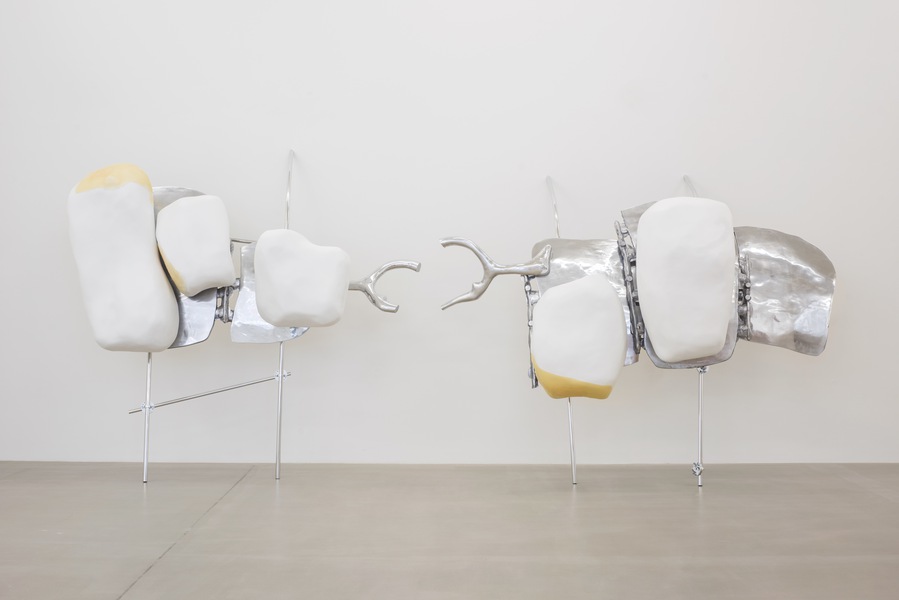
Installation view of Nairy Baghramian, “Scruff of the Neck” at Marian Goodman, London. Courtesy of the artist and Marian Goodman, New York, Paris & London. Photos by Thierry Bal.
5. Nairy Baghramian (born 1971, Isfahan, Iran. Lives and works in Berlin)
A Vincent Award nominee in the year there was—heroically—no winner (she and Jutta Koether turned down their nominations following a legal dispute involving fellow artist Danh Vō) Baghramian has had a far from quiet year. Highlights included winning the Zurich Art Prize (with which, a show currently at Museum Haus Konstruktiv), and a touring exhibition Déformation Professionnelle that kicked off at S.M.A.K in Gent before outings to Salzburg, Minneapolis and Copenhagen. Oh yes, and her debut show as part of the Marian Goodman stable.
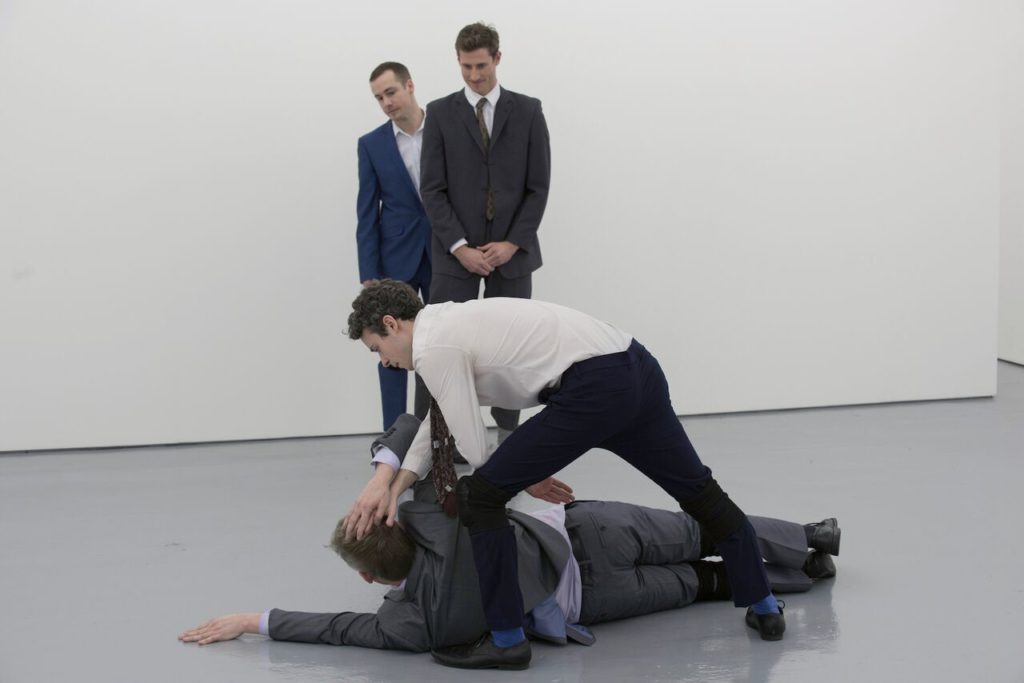
Lucy Beech, Edward Thomasson, “Public Relations” exhibition view at Maureen Paley.
6. Lucy Beech & Edward Thomasson (Born 1985, Beech in Hull, Thomasson in Staffordshire. Live and work in London)
Recipients of one of this year’s Paul Hamlyn Foundation Awards (£50,000 no strings attached support over three years), Beech and Thomasson have a knack for skewering social awkwardness and subverting propriety. Their two-part work Public Relations—which commenced this year at commenced at Site Gallery in Sheffield in January 2016, continued several month later to Maureen Paley in London, and just saw its second part performed at 1664 in The Hague—took a timely look at the mythic “straight white male” and how power is written in the body.
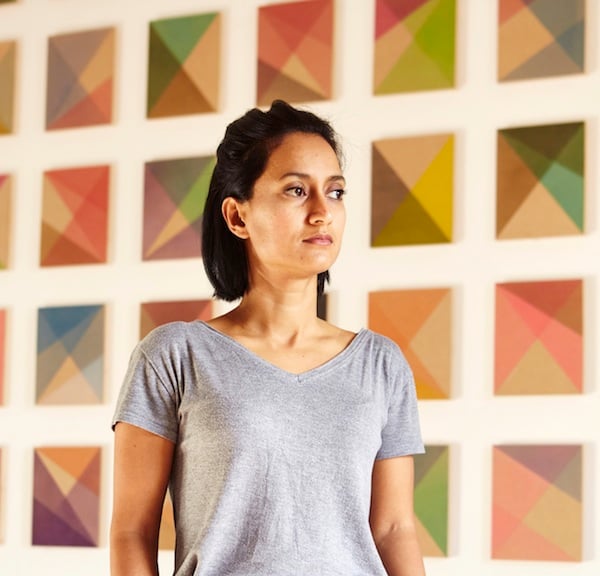
Rana Begum. Photo courtesy of the artist.
7. Rana Begum (Born 1977, Sylhet, Bangladesh. Lives and works in London)
Begum’s anointment as winner of the $100,000 2017 Abraaj Group Art Prize came mere weeks before her 50-meter-long public artwork No. 700 Reflectors was unveiled in London last month. Begum’s occasionally Op-Art-y geometric works and gorgeous plays with color got a more intimately-scaled outing at Parasol Unit in London in the summer.
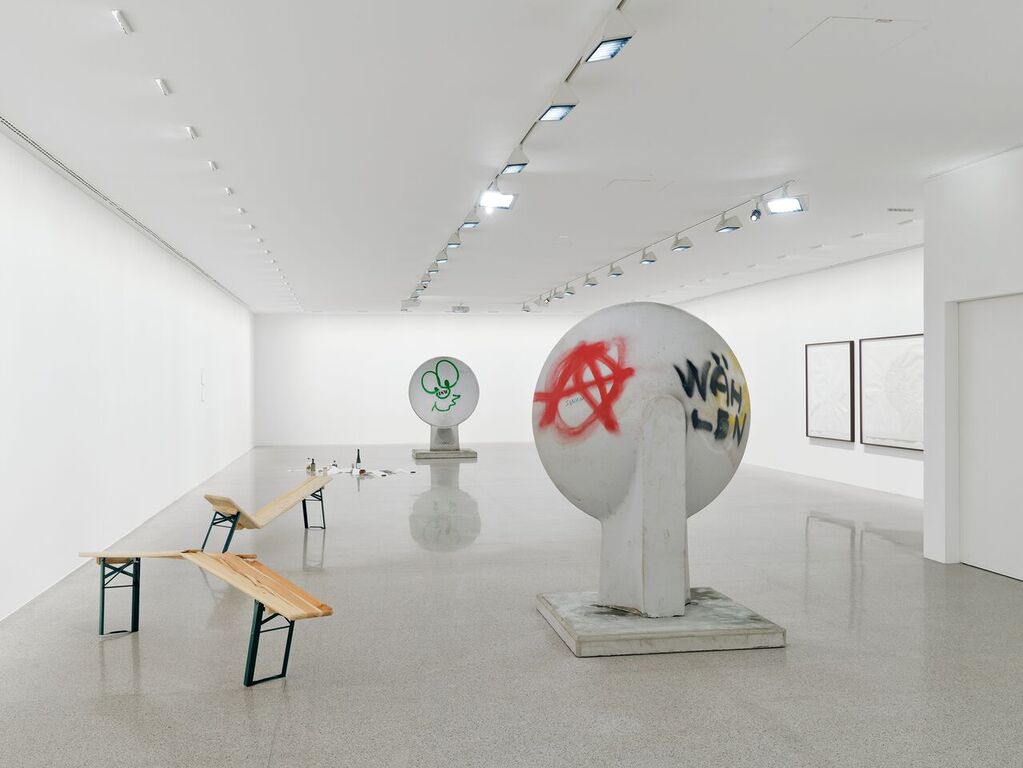
Anna-Sophie Berger, Exhibition view ©Klaus Pichler.
8. Anna-Sophie Berger (Born 1989, Austria. Lives and works in Vienna)
Berger’s been a busy bee this year, with work in 14 group shows (count ‘em) stretching from Stavanger to Mexico City. She’s also had solo outings of various flavours in Bregenz, Munich, and her hometown of Vienna, where, as the first winner of the Kapsch Contemporary Art Prize, she got a show at MUMOK. Berger studied fashion design, and an understanding of the nuances of visual communication informs her work: at MUMOK she’s taken parabolic reflectors out of a local playground and installed them as a low-tech comms system in the gallery.
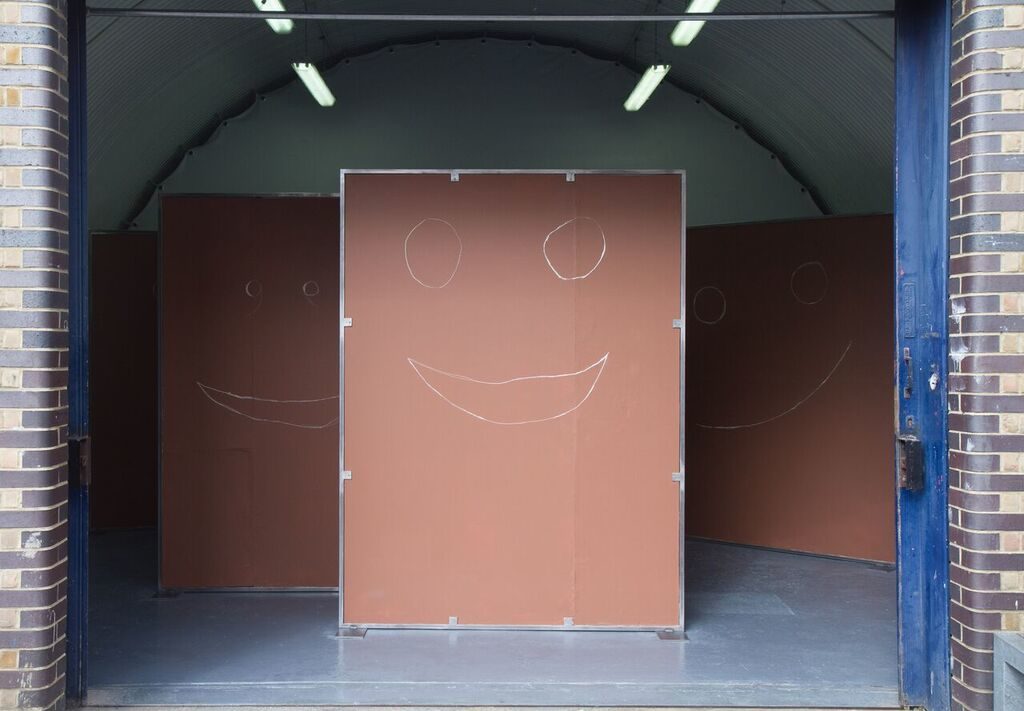
Hannah Black, Not You, (2015), Installation view courtesy Arcadia Missa.
9. Hannah Black (Born Manchester. Lives and works in Berlin)
Chisenhale have just announced a new commission and first solo institutional show for the artist/ writer/ theorist, and not a moment too soon: it feels like Black’s omnipresent already, on the page, online, and in the gallery. To get the ball rolling, there was her much-tweeted review of the 9th Berlin Biennale in Artforum and fall screenings of her film works at the New Museum in NY. Over the summer at a performance event at the ICA she released the character Anxietina who is “transformed by the power of anxiety” into, “a force for simultaneous good and evil”: a perfect character for our times, then.
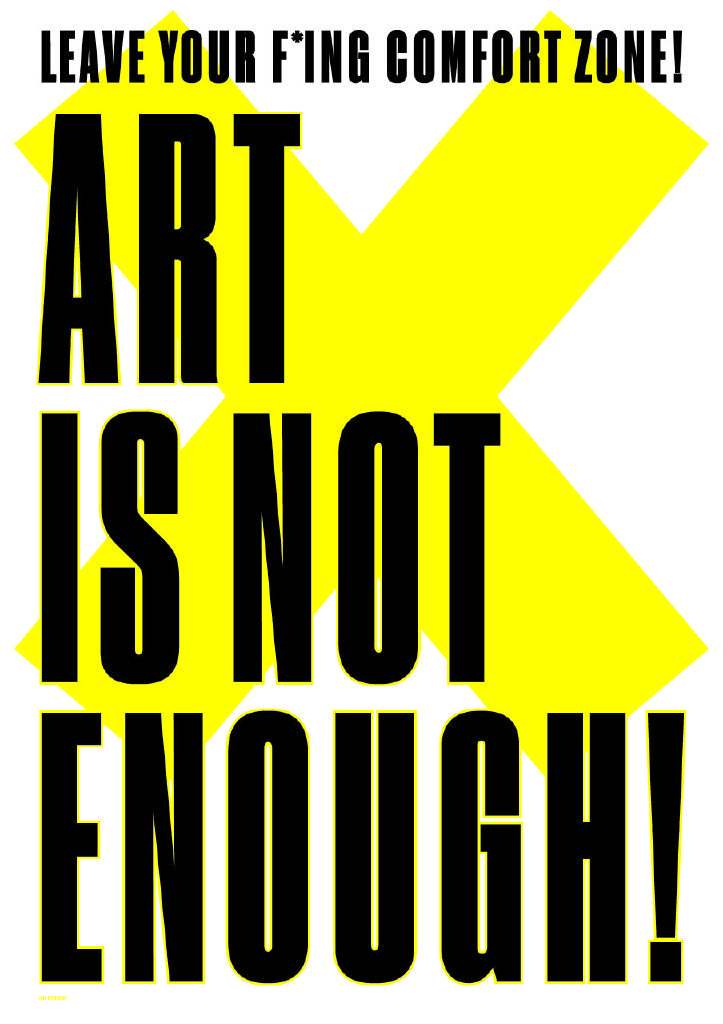
Broomberg & Chanarin with the student of HfBK and KABK, handsoffourrevolution.com
10. Adam Broomberg & Oliver Chanarin (born 1970, Johannesburg and 1971, London. Live and work in London)
Following their lauded solo shows in 2015, Broomberg and Chanarin took a massive career swerve in 2016. Stepping away from art as an industry, they put the full force of their considerable passion behind first the #voteremain campaign, and now, Hands Off Our Revolution: an antifascist movement aimed at quelling the emboldened right wing in Europe and beyond. Sure, it didn’t stop Brexit, but #voteremain energized and inspired both the art world and a younger generation to get agitated over an unsexy political issue. Away from the champagne-swigging and fancy awards, this is art as activism, artist as organizer.

Cooking Sections, Devaluing Property Real Estate Agency (Empire Remains Store, 2016)
11. Cooking Sections (Daniel Fernández Pascual, born Spain 1984 & Alon Schwabe, born 1984 in Tel Aviv. Live and work in London.)
As an associate project of Glasgow International, Cooking Sections received an unusual amount of press attention. Perhaps because they were making ice cream, or perhaps because the ice cream was flavored with “invasive species”: sly commentary on the prejudicial language entering mainstream discourse in the UK around the topic of immigration. Over the fall, they set up shop as The Empire Remains Shop in central London, hosting projects and performances from artists around the world exploring the legacy of the British Empire, and placing Pascual and Schwabe at the center of a formidable artists’ network.
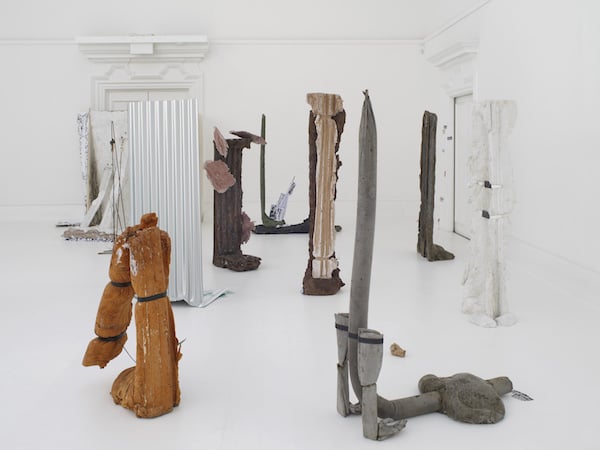
Installation view of Sic Glyphs 2016 at South London Gallery. Photo: Andy Keate; Courtesy of the artist, Herald St, London, Mendes Wood DM, Sao Paulo, Supportico Lopez, Berlin.
12. Michael Dean (Born 1977, Newcastle Upon Tyne. Lives and works in London)
Dean seems an unlikely darling for the popular press, but somehow this rigorously intellectual, concrete tongue-twisting Turner Prize nominee has been the subject of two profile features in London’s Evening Standard, which dubbed him “London’s Most Exciting Art Star.” It was a much-fancied show at South London Gallery that nabbed him the Turner nomination, since then he’s also been the subject of a solo, “Sightings,” at the Nasher Sculpture Centre in Texas.
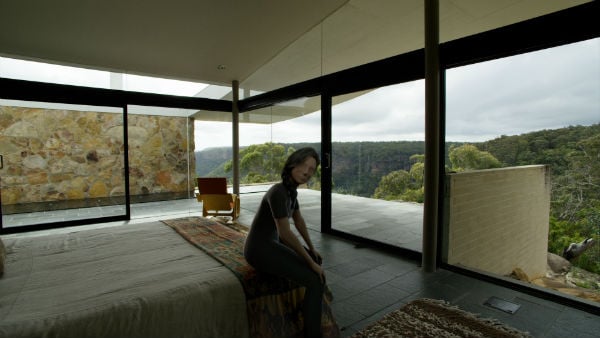
Cécile B. Evans, What the Heart Wants, (2016). Courtesy of Galerie Emanuel Layr, Vienna and Barbara Seiler, Zurich
13. Cécile B. Evans (Born 1983, Cleveland, Ohio. Lives and works in London and Berlin)
A popular inclusion in this year’s biennials (we spotted her in Moscow and Berlin; Hyperlinks or It Didn’t Happen (2014) was also shown at Sydney) Evans got a solo display at the Kunsthalle Winterthur for her comprehensive new work What the Heart Wants, which premiered at the 9th Berlin Biennale and looked at consciousness in the light of ever-more-complex systems of software and hardware. She bows out the year with a show at Tate Liverpool.
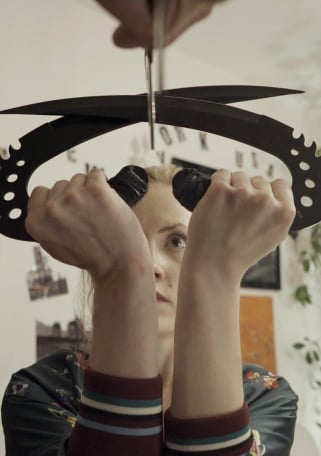
Loretta Fahrenholz, still from 2 A.M. (2016) Courtesy Fridericianum
14. Loretta Fahrenholz (Born 1981, Starnberg. Lives and Works between Berlin and New York)
Last year the Stedelijk Museum in Amsterdam bought Fahrenholz’s disaster movie/ dance video referencing Ditch Plains, and next month will open a sizeable show of acquired and new work. Four films—including the newly commissioned Two A.M—are also showing in a Susanne Pfeffer-curated show at the Fridericianum in Kassel. Which is, our voice on the inside informs us: “a good indicator for German artists about to go big.”
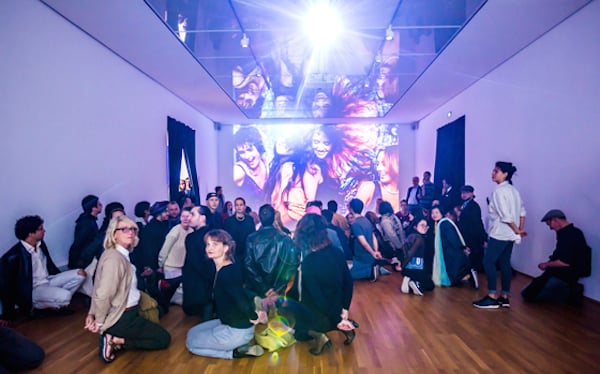
Christian Falsnaes Moving Images, installation views, Hamburger Bahnhof – Museum für Gegenwart, Berlin, (2015). Photo ©David von Becker
15. Christian Falsnaes (Born 1980 Copenhagen. Lives and works in Berlin)
Falsnaes’s Justified Beliefs, first presented in Basel in 2014, choreographed audience members via five instruction-delivering headphones. That work has lived on (most recently in this year’s TodaysArt festival in The Hague) and Falsnaes has built on the idea of the audience as compliant, plastic material in recent works such as Thousand Faces commissioned by the Statens Museum for Kunst in Copenhagen. Earlier this week he was shortlisted for the $100,000 Future Generation Art Prize—manipulating the audience pays off, it seems.
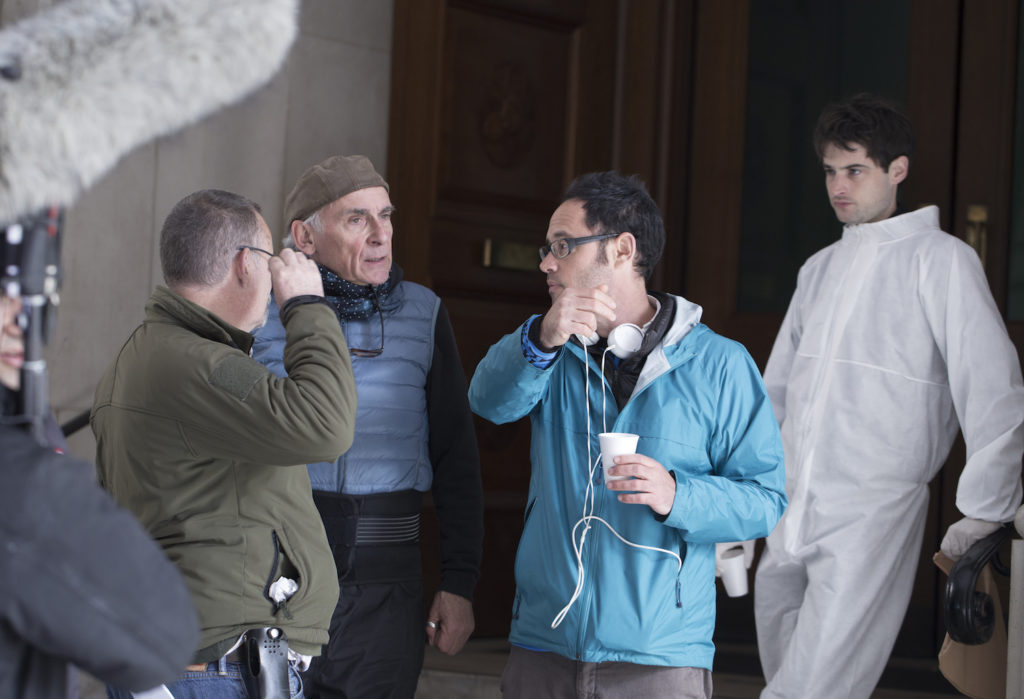
Omer Fast (center) talks with the team of Remainder on set. Courtesy of Soda Pictures.
16. Omer Fast (Born 1972 Jerusalem. Lives and works in Berlin)
Our ears-to-the-ground in the world of moving image tell us that, ultimately, every video artist secretly dreams of making a feature film. Fast has done just that, this year seeing the theatrical release of Remainder, adapted from Tom McCarthy’s mind-bending book. Fast’s not turned his back on the art world just yet though: in March he got a major UK solo show at BALTIC in Gateshead, and a substantial exhibition, “Talking is not always the solution” is on through next March at Martin-Gropius-Bau in Berlin.
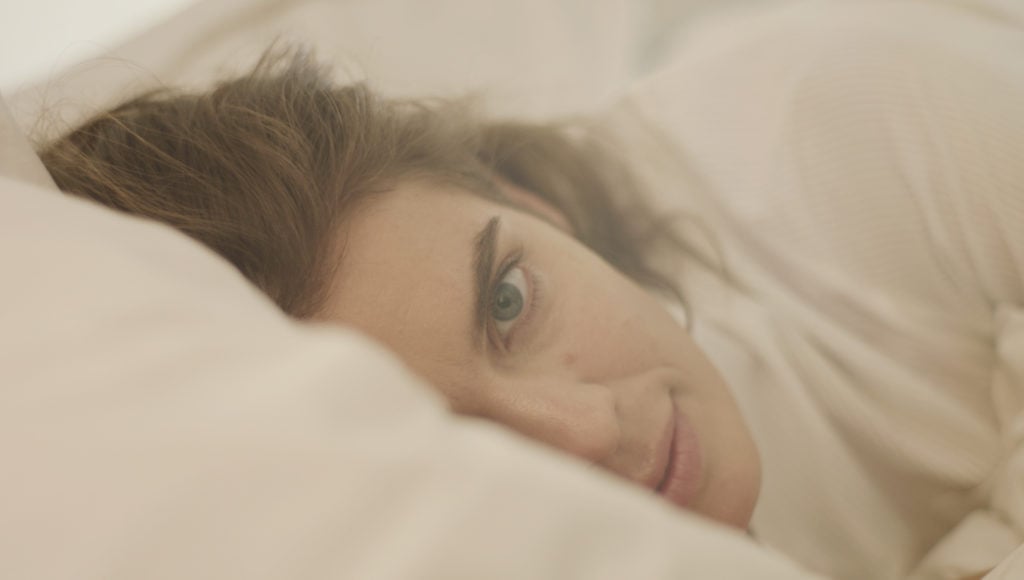
Simon Fujiwara Still, Joanne (2016). Photo courtesy of FVU and The Photographers’ Gallery
17. Simon Fujiwara (Born 1982 London. Lives and works in Berlin)
Fujiwara’s quietly had a major year, with solo outings (shows and performances) in Tokyo, Dublin, Brussels, and London, and a heavy Biennale presence. What really caught our attention was Joanne at London’s Photographers’ Gallery, in which Fujiwara investigated the fallout of a tabloid scandal involving one of his high school teachers; a project that is at once delicate and personal, and a wider investigation of the way images are constructed and language used to denigrate women in the popular media.

Dora García reconstruction of the Nokdu bookstore. Courtesy of Sarah Casone.
18. Dora García (born 1965, Vallodolid, Spain. Lives and works in Barcelona)
García’s got plenty on her plate: the short film El helicóptero—widely shown on the artist moving image circuit this year—was the first part in a longer film project on the (anti) happenings of Oscar Masotta. Looking, too, at conversations, interactions and happening, at the Gwangju Biennial she presented the Nokdu bookstore for the living and the dead, recreating a site of political importance in the 1980s as a space for contemporary discourse. 2017 kicks off with These books were alive; they spoke to me! at The Tetley, in Yorkshire.

Karlos Gil, L´objet de repetition, (2016) Installation view at CRAC Le 19, Montbéliard, France.
19. Karlos Gil (Born 1984, Toledo. Lives and works in Madrid)
Young curators like Gil—he’s been in modish group shows all over western Europe in 2016. Next up: “Morphogenesis,” a solo show curated by Artnet favourite João Laia, the opening exhibition at the new Galeria Francisco Fino, Lisbon.
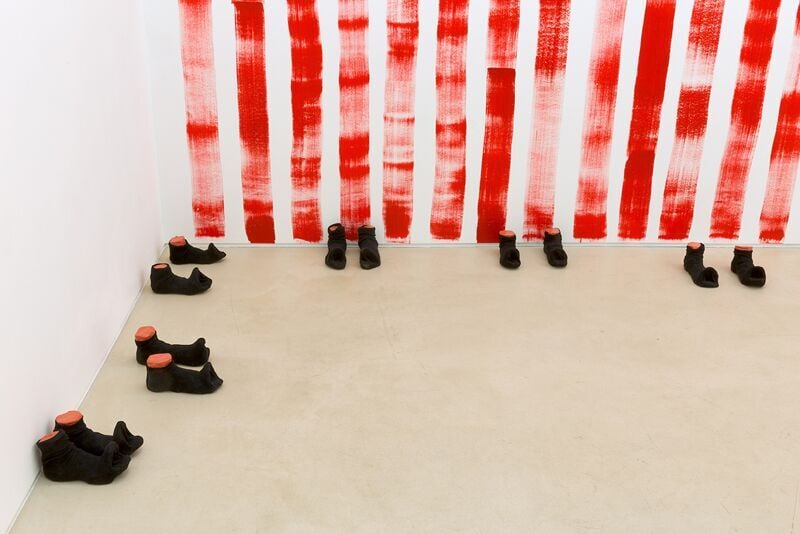
Emma Hart and Jonathan Baldock, Love Life, (2016). Courtesy PEER, London. Photo: Peter White, FXP Photography
20. Emma Hart (Born 1974, London. Lives and works in London)
Announced as the winner of the Max Mara Prize earlier this year, Hart has spent much of 2016 working through her residency in Italy, studying the work of family therapists, graves of the ancient Romans and ceramic traditions of Faenza. It’s been intense. Summer 2017, the fruits of her labors will go on show at Whitechapel Gallery in London before moving on the Collezione Maramotti in Reggio Emilia. In the meantime, Hart lovers can get their fix at “Love Life,” her evolving touring show of works exploring the domestic macabre with Jonathan Baldock. Currently at PEER in Hoxton, it goes on tour and transforms over the course of 2017.

Celia Hempton, Tor, (Southard Reid, Frieze Art Fair 2016). Courtesy the artist and Southard Reid. Photo: Lewis Ronald
21. Celia Hempton (Born 1981 Stroud, UK. Lives and works in London)
Hempton’s lusciously painted dick pix were a highlight of this year’s Frieze London. Hempton has a knack of finding odd beauty in the transgressive and those parts of modern life that one might otherwise not want to look at. A participant in London’s emerging “happenings” scene in 2016—notably Serpentine Gallery’s Magazine Sessions and the ICA-backed Art Night—she’s also attracting attention in the US, with work in Art in the Age of the Internet, 1989 to Today at the ICA / Boston coming up in 2018.

Camille Henrot working on Monday, Fondazione Memmo, May 2016. Photo: Daniele Molajoli
22. Camille Henrot (Born 1978 Paris. Lives and works in New York)
Among other things, in 2016 Henrot orchestrated this year’s Volcano Extravaganza on the Italian island of Stromboli—a jolly run up to what is likely to be a busy 2017. Next fall she has the “Carte Blanche” of the Palais de Tokyo in Paris, an honor currently enjoyed by Tino Sehgal, and something of a coming of age. She may be living in New York, but as Parreno, Huyghe, and Gonzalez-Foerster mature, Henrot feels like she’s being anointed as part of France’s coming generation.
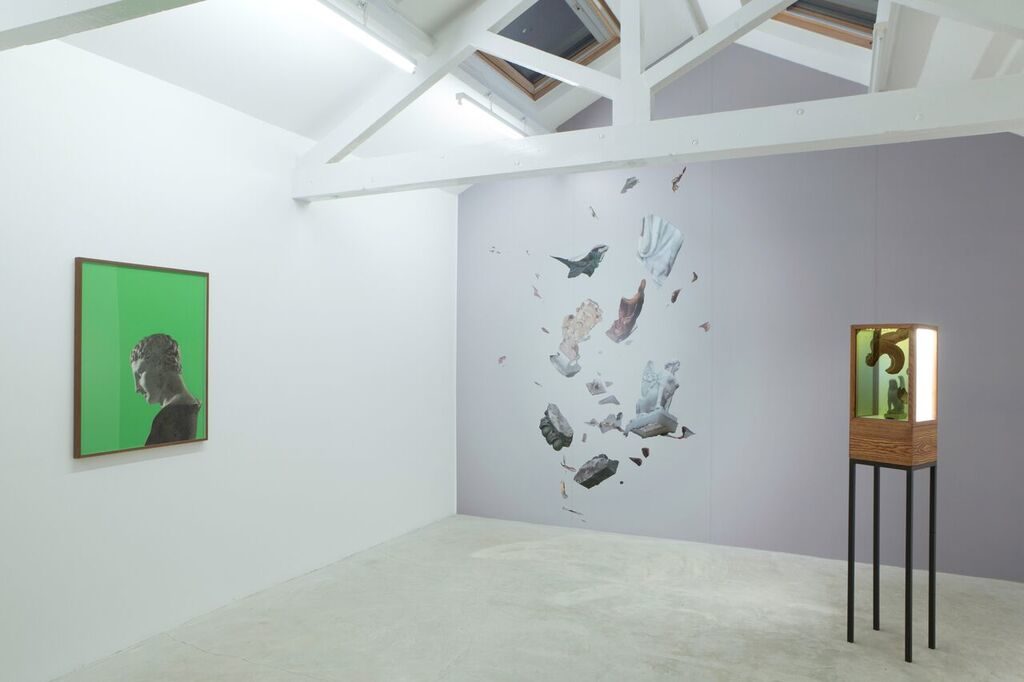
Patrick Hough, Unobservables, (2016). Image courtesy of narrative projects, London
23. Patrick Hough (Born 1989, Galway, Ireland. Lives and works in London)
Hough’s explorations of value and collecting habits—via a triptych of films starring film props—were a highlight of João Laia’s satellite show at the Moscow Young Art Biennial this year. Around the same time, Hough was announced as a recipient of a Jerwood Award—the resulting film will be shown in March 2017, with a two-person show (with Michal Baror) opening the following month at narrative projects, London.
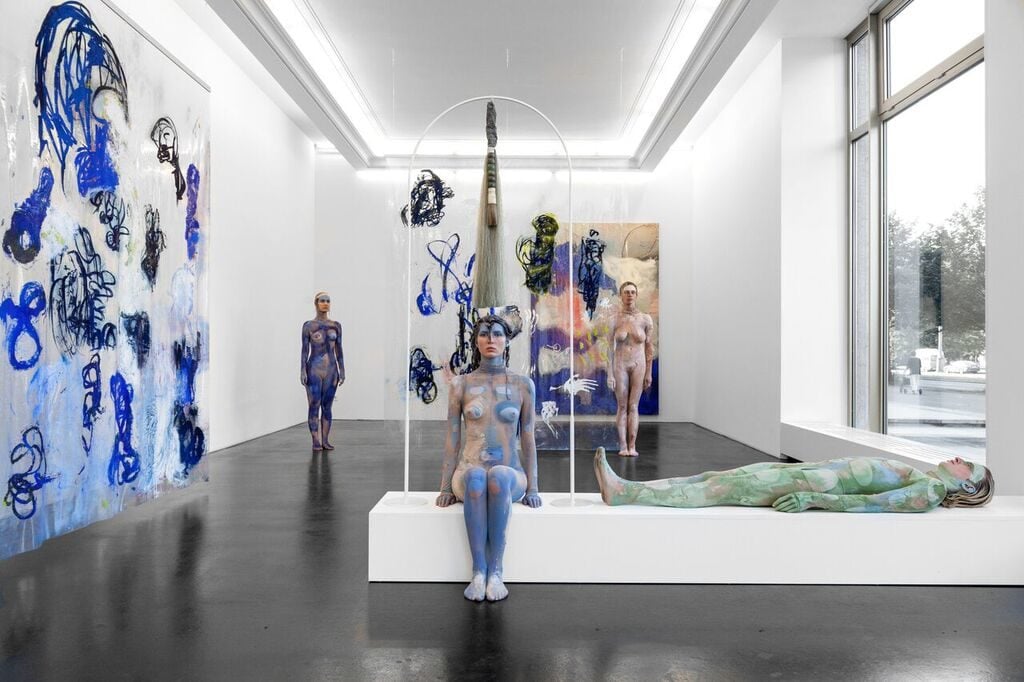
Donna Huanca, “Surrogate Painteen” (2016). Courtesy Peres Projects. Photo: Adrian Parvulescu, Berlin.
24. Donna Huanca (Born 1980, Chicago. Lives and works in Berlin)
Huanca was hotly tipped on this list last year: she’s had a stellar 2016, including her largest work yet, Scar Cymbals—a commission for the Zabludowicz Collection in London combining sculptural works, painting, sound, and live performance over a number of months. 2017 looks steamy for Huanca too: in February alone she’s in the next group exhibition at the Julia Stoschek Collection in Berlin, and has a solo show in Madrid at Travesia Cuatro.
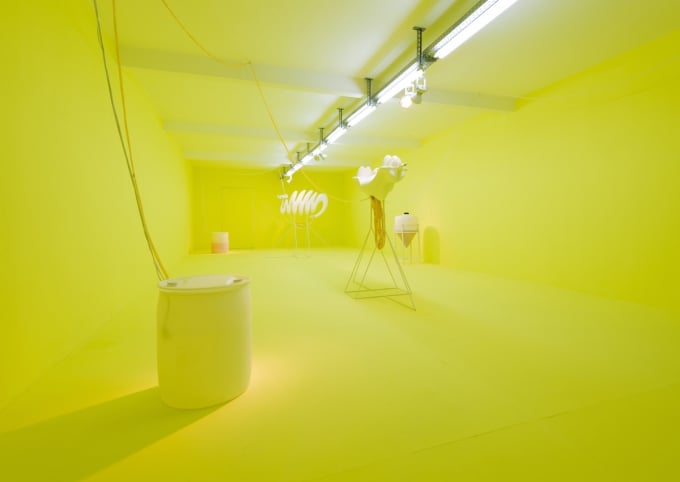
Installation view at DUVE Berlin of Marguerite Humeau’s “Echoes.” Photo: Courtesy Duve Berlin
25. Marguerite Humeau (Born 1986, France. Lives and works in London)
Five years after graduating from London’s Royal College of Art, Humeau was everywhere in 2016: a solo show at the Palais de Tokyo, another at Nottingham Contemporary, the Moscow Young Art Biennial (where she won a major award), Manifesta 11, and Megacity, in Seoul. Don’t be surprised if she’s embraced more forcefully by the scientific community in coming years: her science-based research is already as likely to get her coverage in Wired as she is in Frieze.


